Increased Electrical Conductivity of Carbon Nanotube Fibers by Thermal and Voltage Annealing
Abstract
:1. Introduction
2. Experimental Section
2.1. Materials
2.2. Nanoprobe Measurements
2.3. Thermal Annealing in Nanoprobe
2.4. Voltage Annealing in Nanoprobe
2.5. Thermal Annealing in Tube Furnace
2.6. Characterization
3. Results and Discussion
3.1. Thermal Annealing in Nanoprobe
3.2. Voltage Annealing in Nanoprobe
3.3. Thermal Annealing in Tube Furnace
4. Conclusions
Author Contributions
Funding
Data Availability Statement
Acknowledgments
Conflicts of Interest
References
- Peng, J.; He, Y.; Zhou, C.; Su, S.; Lai, B. The carbon nanotubes-based materials and their applications for organic pollutant removal: A critical review. Chin. Chem. Lett. 2021, 32, 1626–1636. [Google Scholar] [CrossRef]
- Prajapati, S.K.; Malaiya, A.; Kesharwani, P.; Soni, D.; Jain, A. Biomedical applications and toxicities of carbon nanotubes. Drug Chem. Toxicol. 2020, 1–16. [Google Scholar] [CrossRef] [PubMed]
- Anzar, N.; Hasan, R.; Tyagi, M.; Yadav, N.; Narang, J. Carbon nanotube—A review on Synthesis, Properties and plethora of applications in the field of biomedical science. Sens. Int. 2020, 1, 100003. [Google Scholar] [CrossRef]
- Jain, N.; Gupta, E.; Kanu, N.J. Plethora of Carbon Nanotubes Applications in Various Fields—A State-of-the-Art-Review. Smart Sci. 2021, 1–24. [Google Scholar] [CrossRef]
- Jarosz, P.; Schauerman, C.; Alvarenga, J.; Moses, B.; Mastrangelo, T.; Raffaelle, R.; Ridgley, R.; Landi, B. Carbon nanotube wires and cables: Near-term applications and future perspectives. Nanoscale 2011, 3, 4542–4553. [Google Scholar] [CrossRef] [PubMed]
- Bulmer, J.S.; Kaniyoor, A.; Elliott, J.A. A meta-analysis of conductive and strong carbon nanotube materials. Adv. Mater. 2021, 33, 2008432. [Google Scholar] [CrossRef]
- Hjortstam, O.; Isberg, P.; Soderholm, S.; Dai, H. Can we achieve ultra-low resistivity in carbon nanotube-based metal compo-sites? Appl. Phys. A Mater. Sci. Process 2004, 78, 1175–1179. [Google Scholar] [CrossRef]
- Janas, D.; Liszka, B. Copper matrix nanocomposites based on carbon nanotubes or graphene. Mater. Chem. Front. 2018, 2, 22–35. [Google Scholar] [CrossRef]
- Jordan, M.B.; Feng, Y.; Burkett, S.L. Development of seed layer for electrodeposition of copper on carbon nanotube bundles. J. Vac. Sci. Technol. B 2015, 33, 021202. [Google Scholar] [CrossRef]
- Subramaniam, C.; Sekiguchi, A.; Yamada, T.; Futaba, D.N.; Hata, K. Nano-scale, planar and multi-tiered current pathways from a carbon nanotube–copper composite with high conductivity, ampacity and stability. Nanoscale 2016, 8, 3888–3894. [Google Scholar] [CrossRef] [PubMed]
- Kang, C.S.; Lee, I.J.; Seo, M.S.; Kim, S.H.; Baik, D.H. Effect of purification method on the electrical properties of the carbon nanotube fibers. Fibers Polym. 2017, 18, 1580–1585. [Google Scholar] [CrossRef]
- Barnett, C.J.; Gowenlock, C.E.; Welsby, K.; Orbaek-White, A.; Barron, A.R. Spatial and Contamination-Dependent Electrical Properties of Carbon Nanotubes. Nano Lett. 2018, 18, 695–700. [Google Scholar] [CrossRef]
- Barnett, C.J.; Gowenlock, C.E.; White, A.O.; Barron, A.R. Pressure dependent conduction of individual multi-walled carbon nanotubes: The effect of mechanical distortions. Nanoscale Adv. 2021, 3, 643–646. [Google Scholar] [CrossRef]
- Barnett, C.J.; McGettrick, J.D.; Gangoli, V.S.; Kazimierska, E.; Orbaek White, A.; Barron, A.R. Effect of applied pressure on the electrical resistance of carbon nanotube fibres. Materials 2021, 14, 2106. [Google Scholar] [CrossRef] [PubMed]
- Gangoli, V.S.; Raja, P.M.V.; Esquenazi, G.L.; Barron, A.R. The safe handling of bulk low-density nanomaterials. SN Appl. Sci. 2019, 1, 644. [Google Scholar] [CrossRef] [Green Version]
- Cobley, R.; Brown, R.A.; Barnett, C.J.; Maffeis, T.G.G.; Penny, M.W. Quantitative analysis of annealed scanning probe tips using energy dispersive x-ray spectroscopy. Appl. Phys. Lett. 2013, 102, 23111. [Google Scholar] [CrossRef]
- Barnett, C.J.; Kryvchenkova, O.; Wilson, L.S.J.; Maffeis, T.G.G.; Kalna, K.; Cobley, R. The role of probe oxide in local surface conductivity measurements. J. Appl. Phys. 2015, 117, 174306. [Google Scholar] [CrossRef] [Green Version]
- Smith, N.A.; Lord, A.M.; Evans, J.E.; Barnett, C.J.; Cobley, R.J.; Wilks, S.P. Forming reproducible non-lithographic nano-contacts to assess the effect of contact compressive strain in nanomaterials. Semicond. Sci. Technol. 2015, 30, 065011. [Google Scholar] [CrossRef]
- Dresselhaus, M.; Dresselhaus, G.; Saito, R.; Jorio, A. Raman spectroscopy of carbon nanotubes. Phys. Rep. 2005, 409, 47–99. [Google Scholar] [CrossRef]
- Gangoli, V.S.; Godwin, M.A.; Joshi, S.S.; Allanavar, A.B.; Reddy, G.; Bradley, R.K.; Barron, A.R. The state of HiPco sin-gle-walled carbon nanotubes in 2019. C 2019, 5, 65. [Google Scholar]
- Zhang, K.S.; Pham, D.; Lawal, O.; Ghosh, S.; Gangoli, V.S.; Smalley, P.; Kennedy, K.; Brinson, B.; Billups, W.E.; Hauge, R.; et al. Overcoming catalyst residue inhibition of the functionalization of single-walled carbon nano-tubes via the Billups-Birch reduction. ACS Appl. Mater. Interfaces 2017, 9, 37972–37980. [Google Scholar] [CrossRef] [PubMed] [Green Version]
- Suherman, H.; Sulong, A.B.; Sahari, J. Effect of filler loading concentration, curing temperature and molding pressure on the electrical conductivity of CNTs/graphite/epoxy nanocomposites at high loading of conductive fillers. Int. J. Mech. 2010, 1, 74–79. [Google Scholar]
- Khanbolouki, P.; Tehrani, M. Purification, structural evolutions, and electrical properties of carbon nanotube yarns processed via incandescent annealing. Carbon 2020, 168, 710–718. [Google Scholar] [CrossRef]
- Orbaek, A.W.; Aggarwal, N.; Barron, A.R. The development of a ‘process map’ for the growth of carbon nanomaterials from ferrocene by injection CVD. J. Mater. Chem. A 2013, 1, 14122–14132. [Google Scholar] [CrossRef]
- Wright, K.D.; Barron, A.R. Catalyst Residue and Oxygen Species Inhibition of the Formation of Hexahapto-Metal Complexes of Group 6 Metals on Single-Walled Carbon Nanotubes. C 2017, 3, 17. [Google Scholar] [CrossRef] [Green Version]
- Obrey, S.J.; Bott, S.G.; Barron, A.R. A Lewis Base Promoted Alkyl/Alkoxide Ligand Redistribution: Reaction of [Me2Al(μ-OCPh3)]2 with THF. Organometallics 2001, 20, 5119–5124. [Google Scholar] [CrossRef]
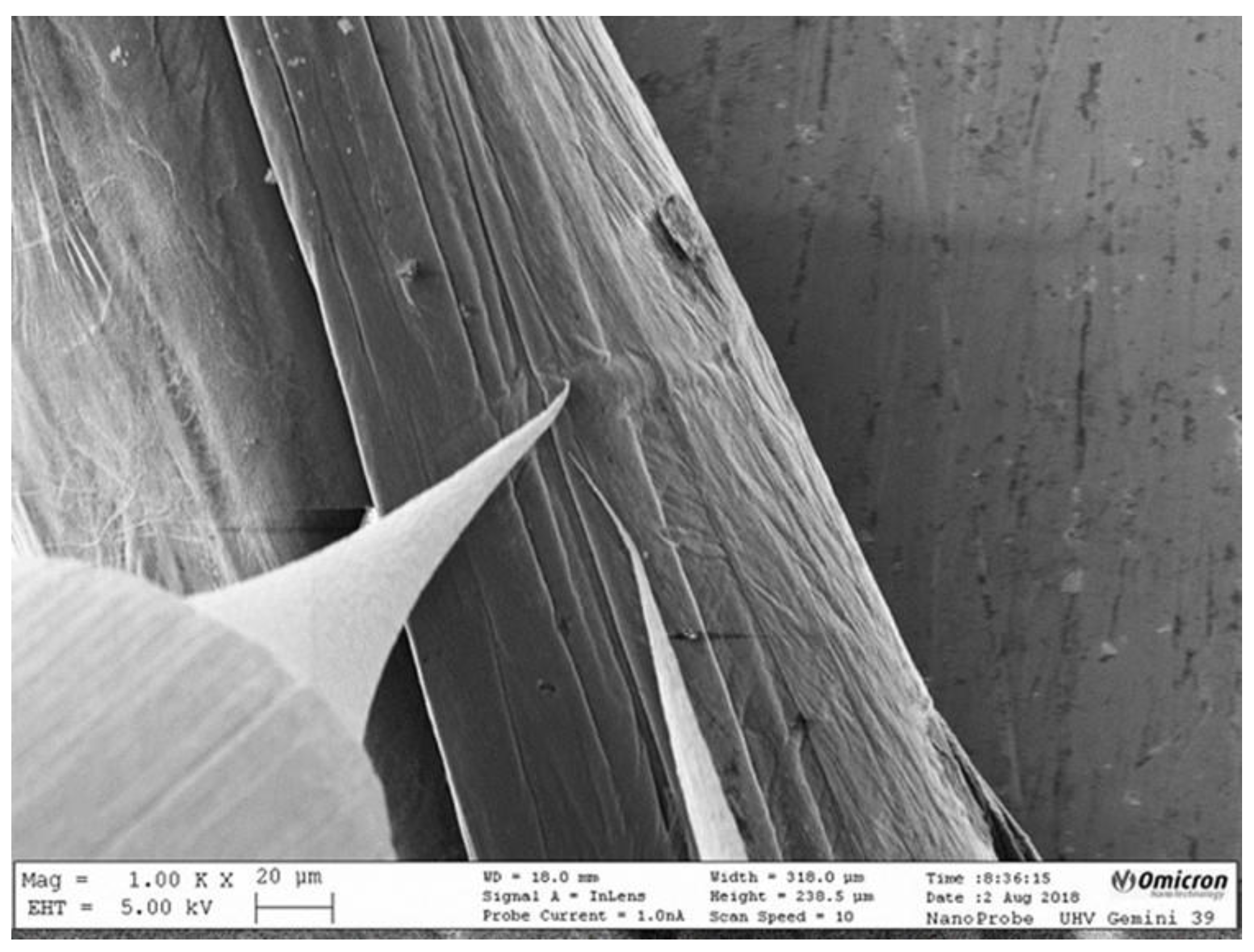
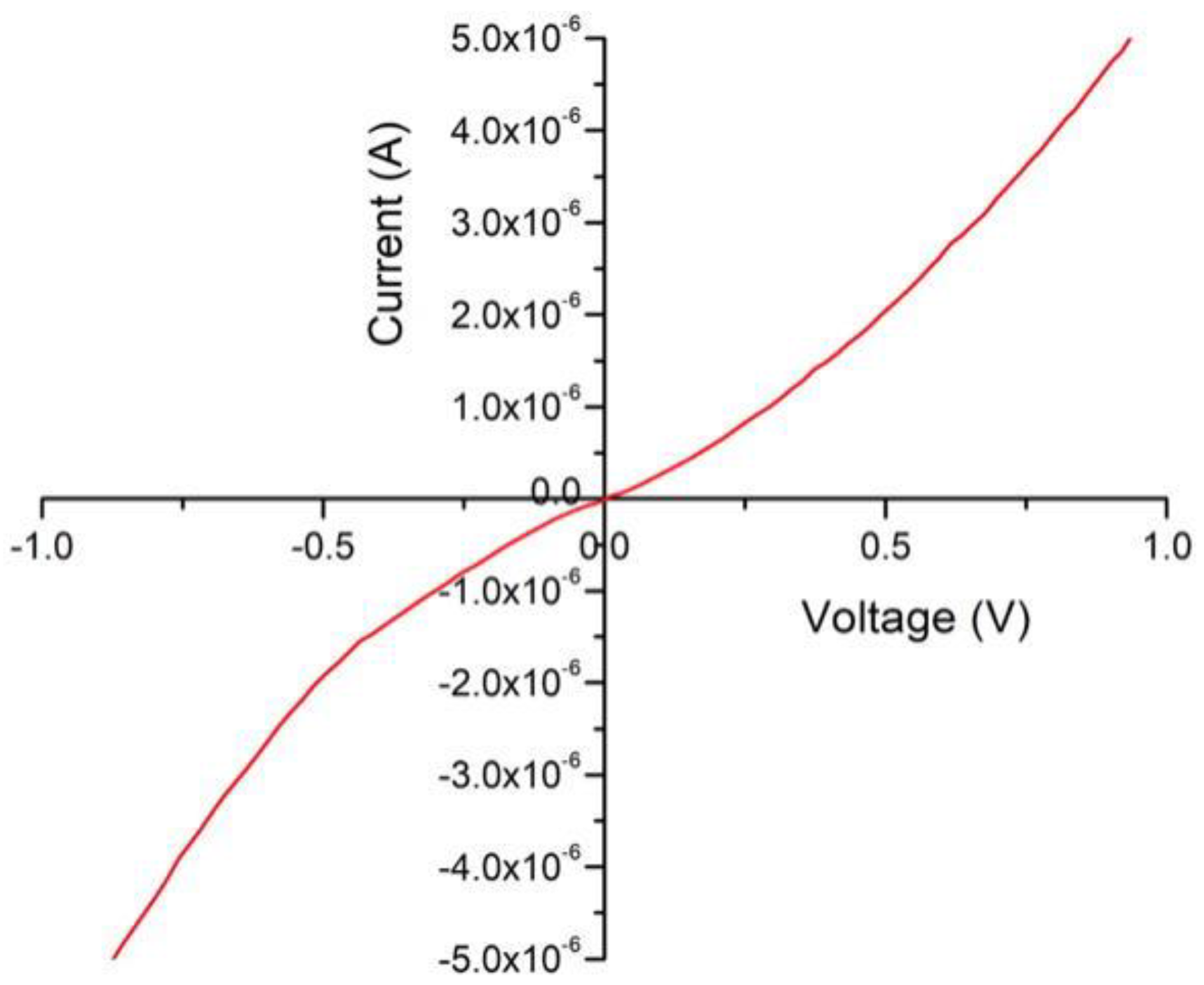
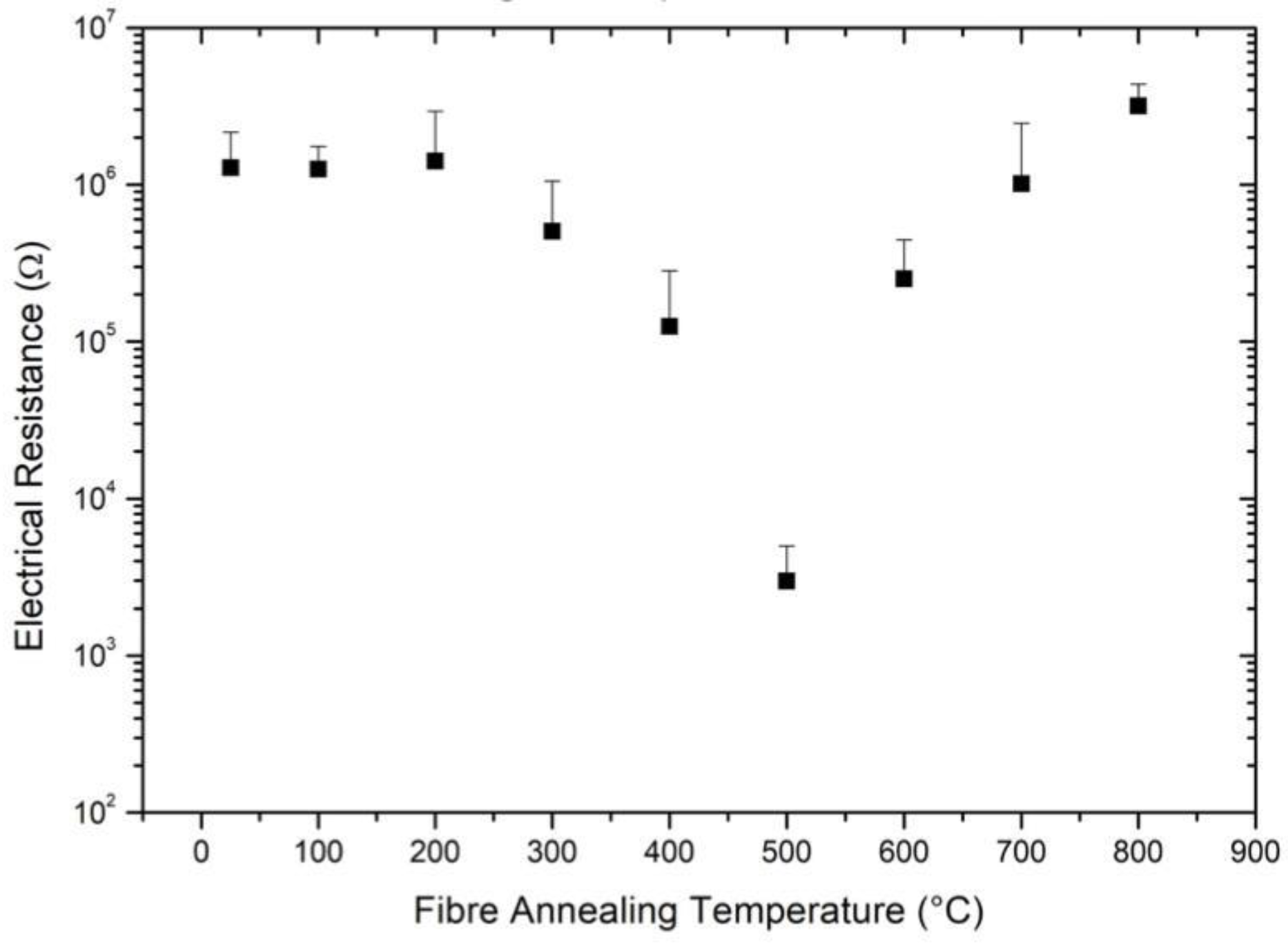
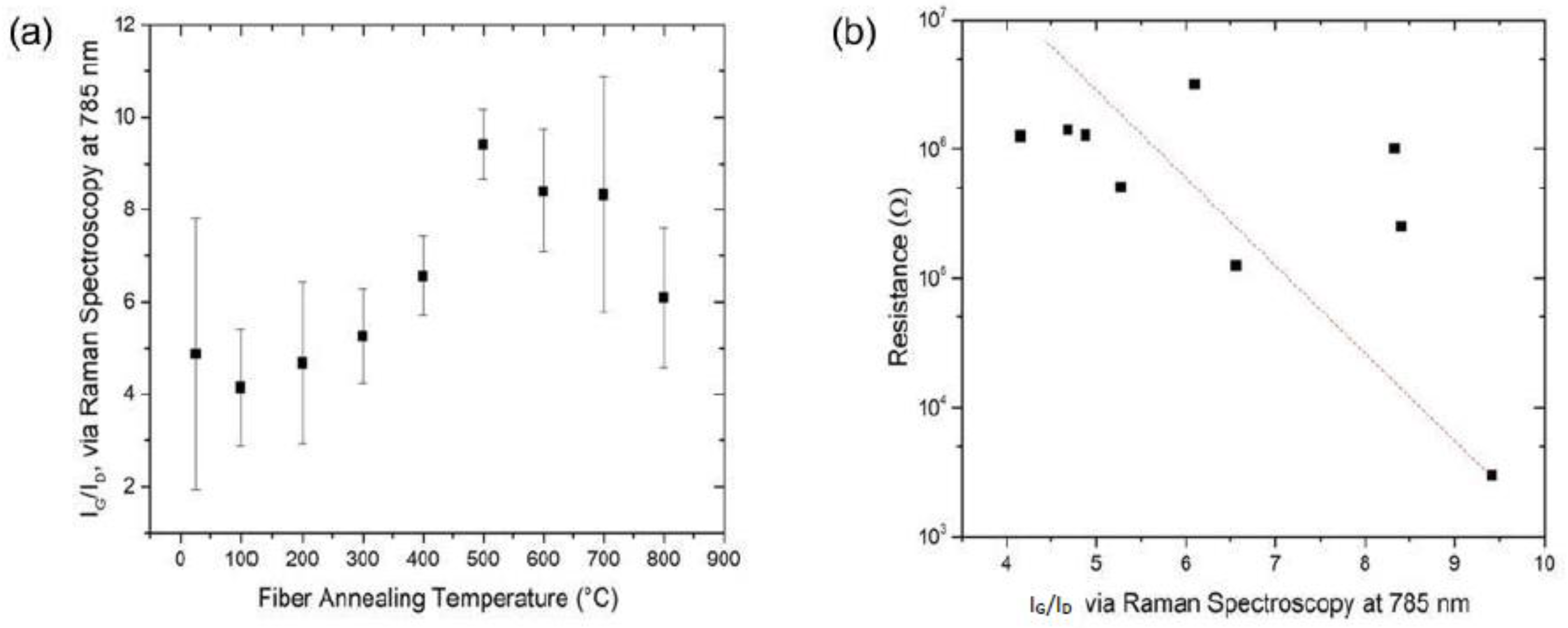
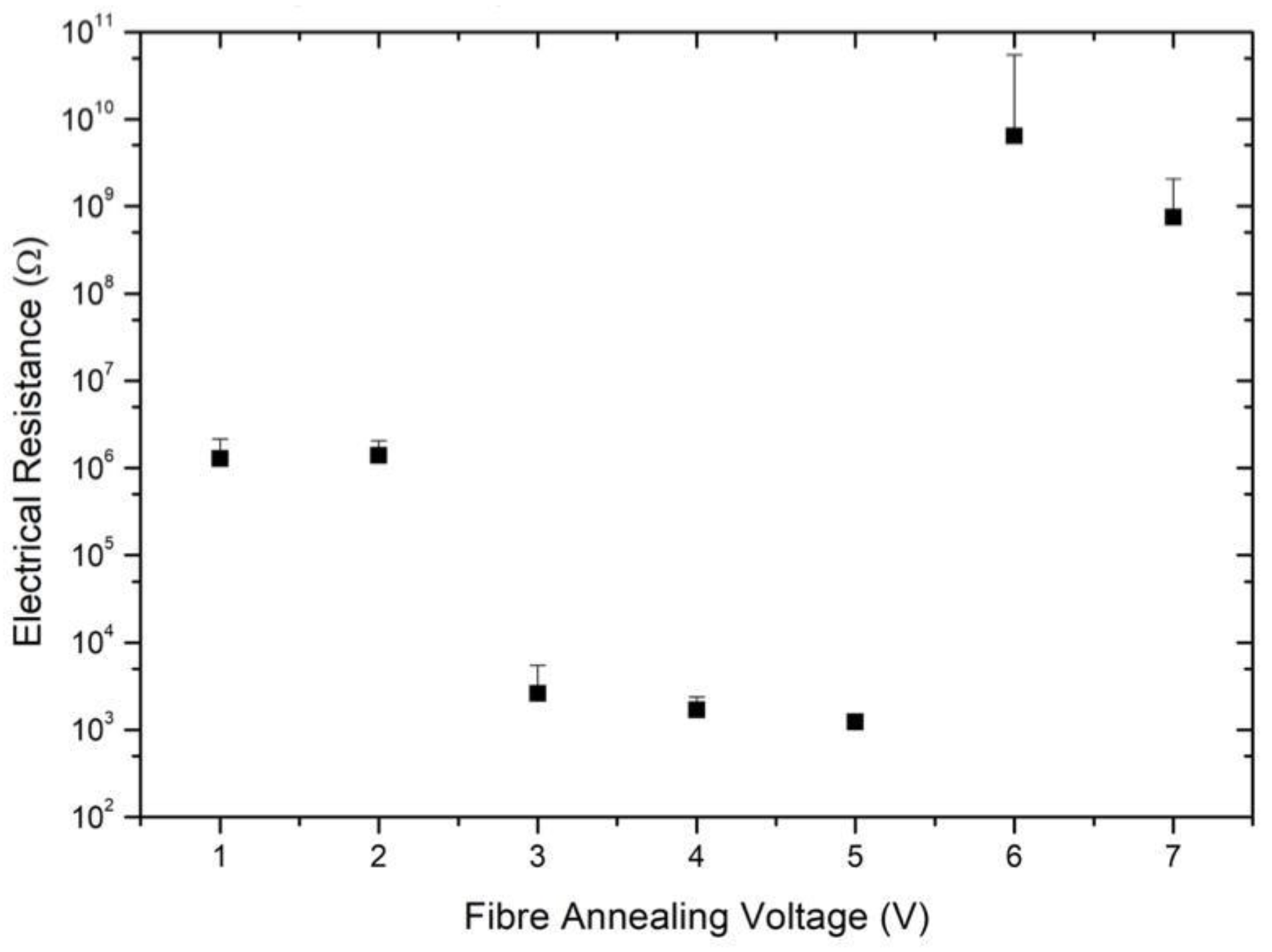
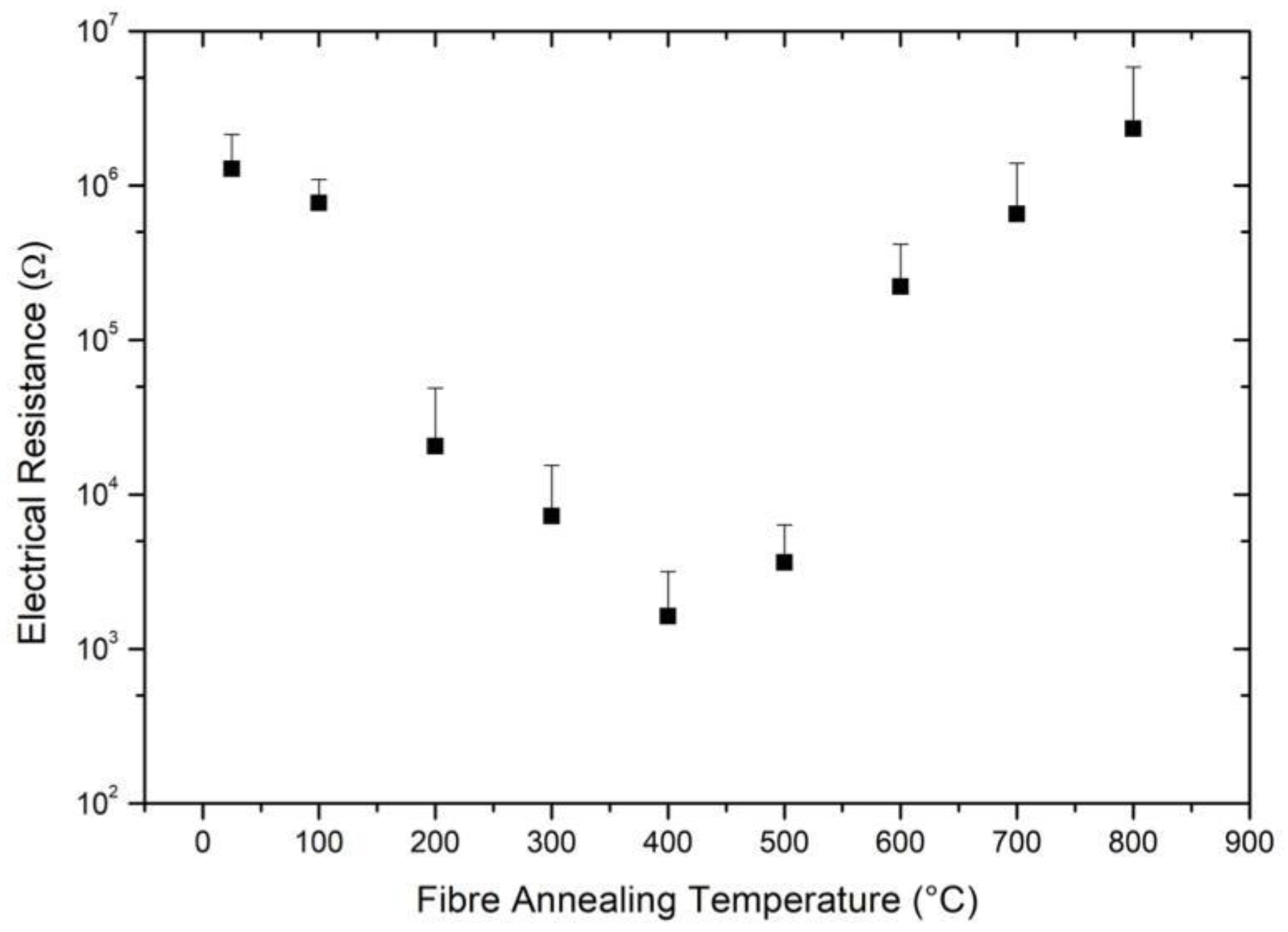
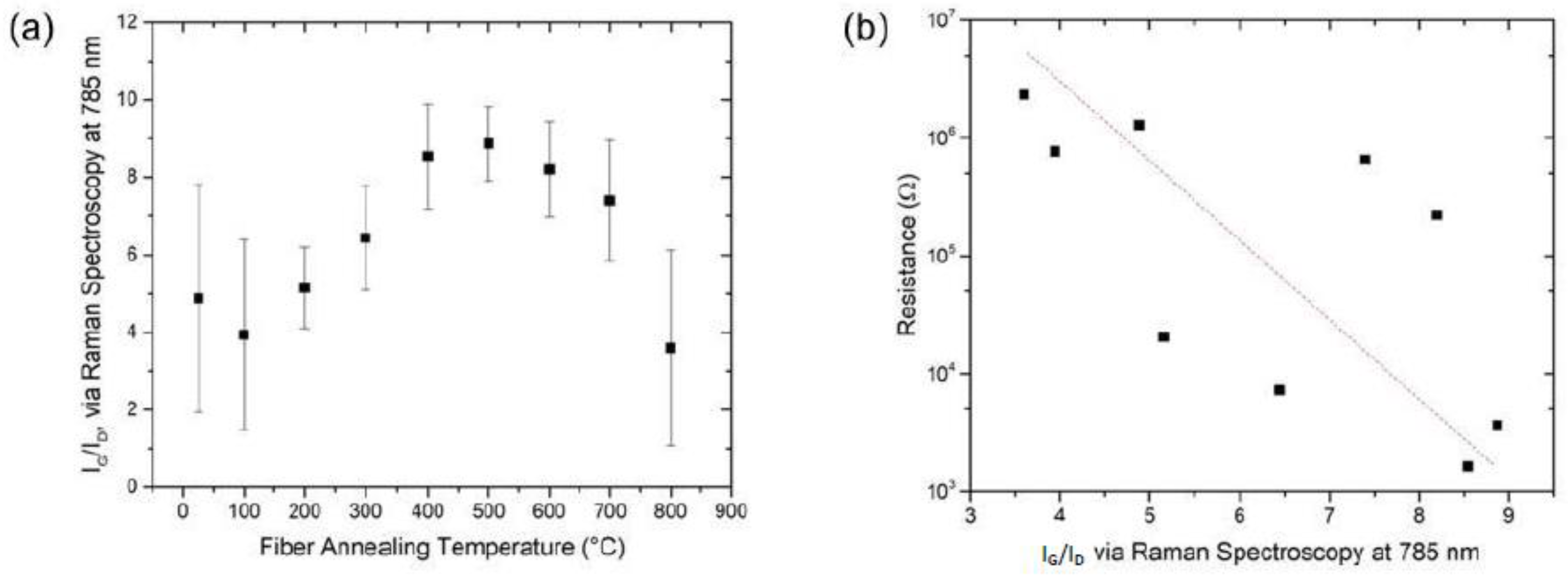
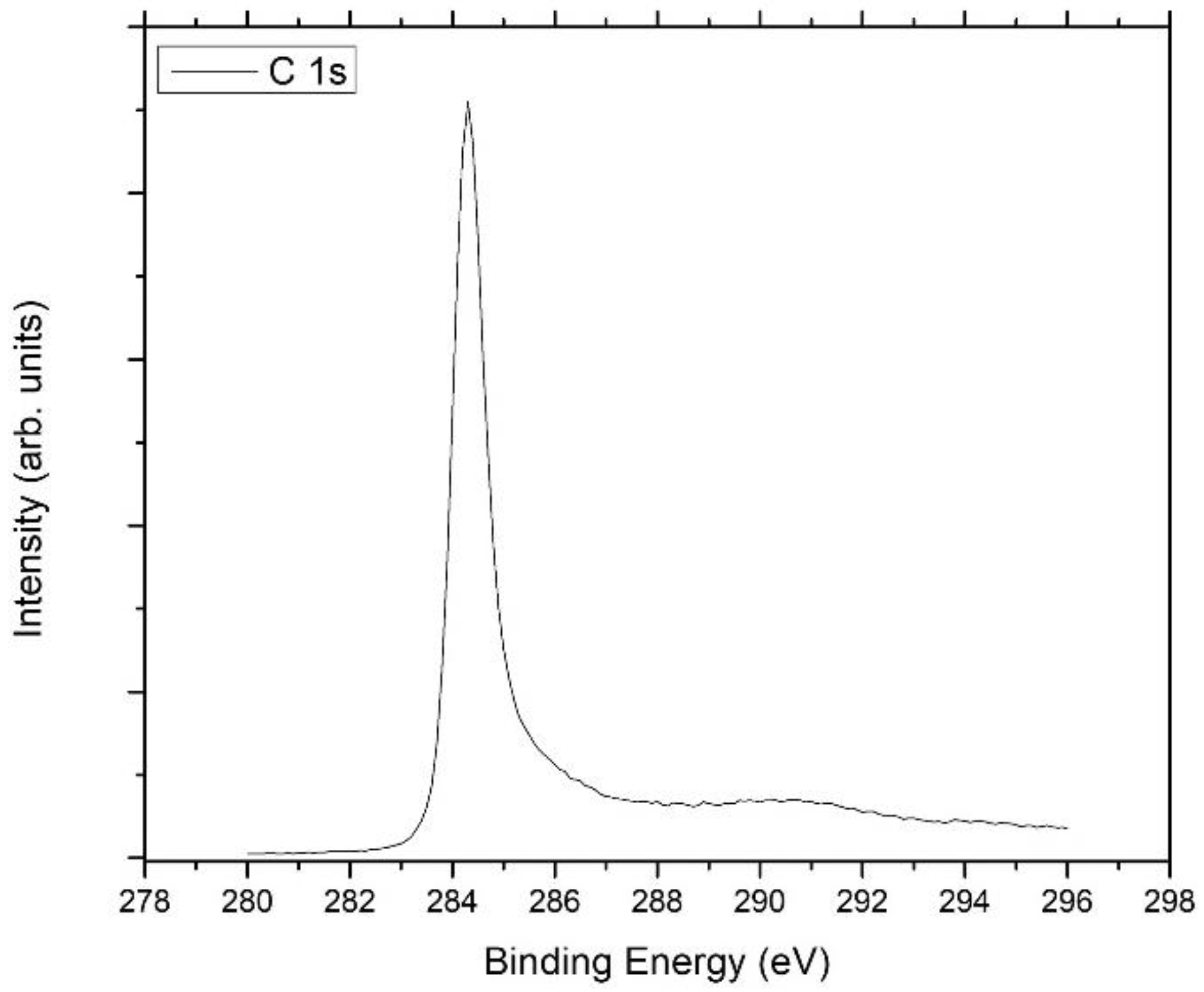

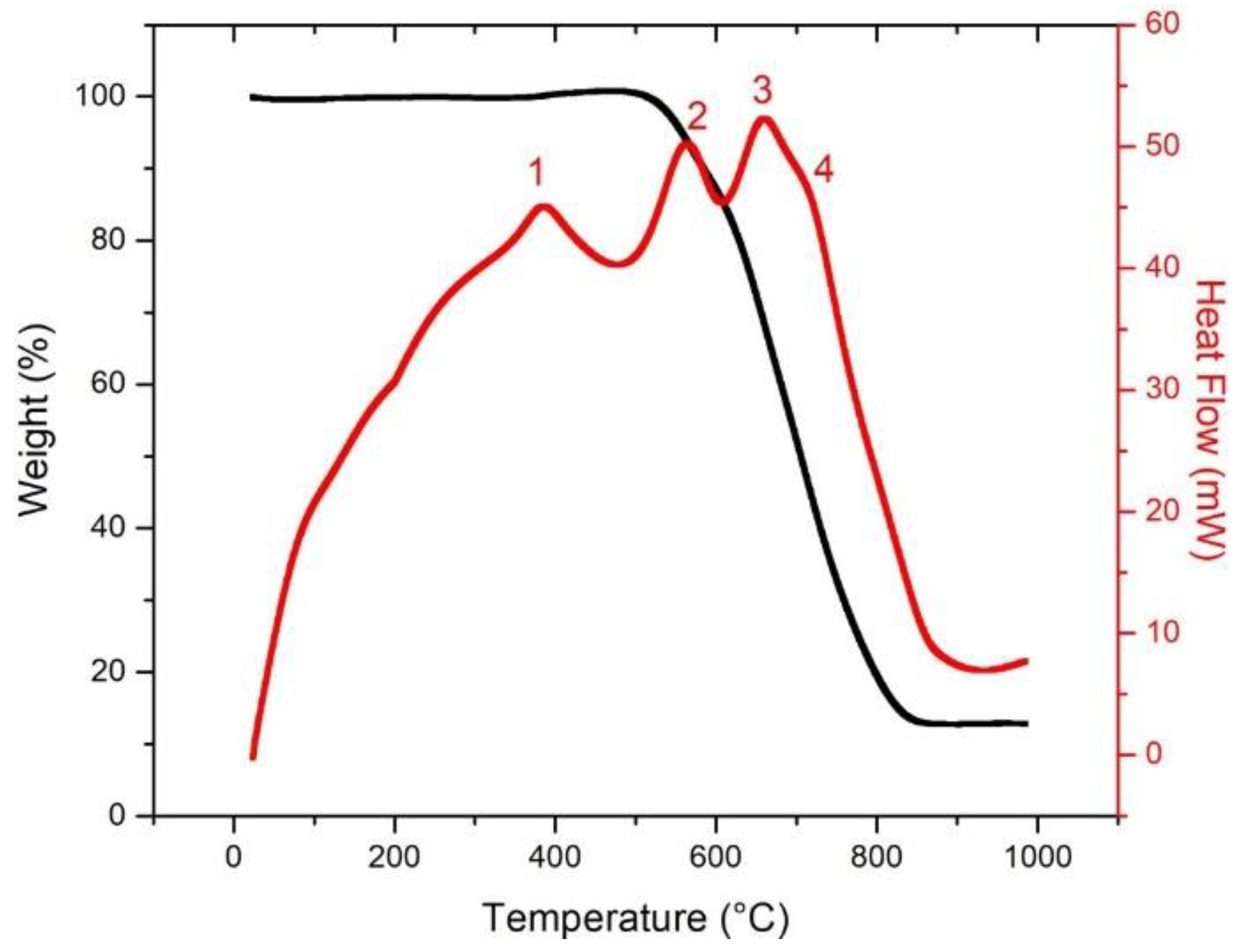
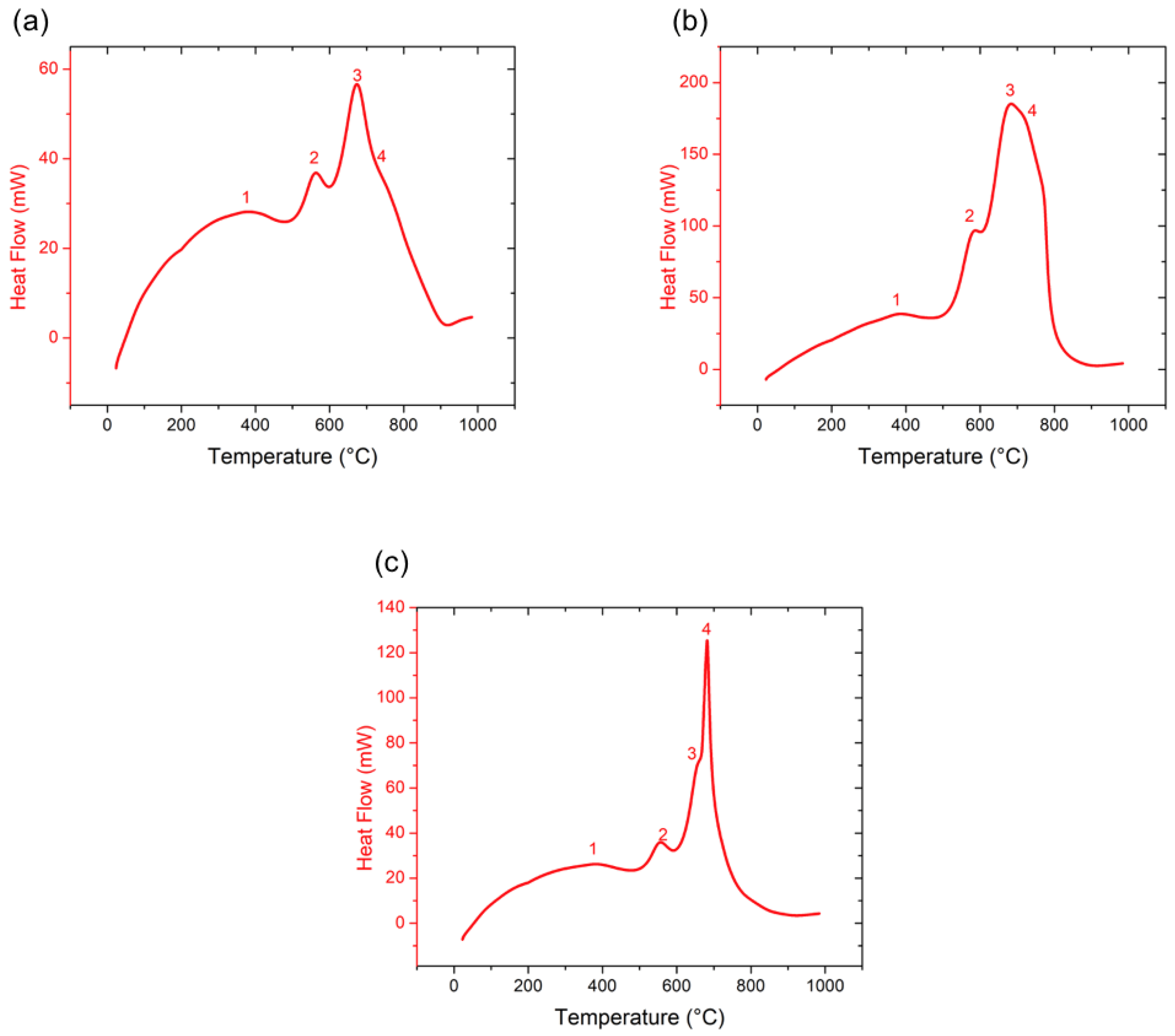
| Annealing Temperature. (°C) | Carbon (%) | Iron (%) | Oxygen (%) | Sulphur (%) | Silicon (%) |
|---|---|---|---|---|---|
| 100 | 95.98 ± 0.64 | 0.24 ± 0.01 | 3.38 ± 0.58 | 0.14 ± 0.01 | 0.22 ± 0.05 |
| 200 | 95.29 ± 0.45 | 0.26 ± 0.01 | 3.90 ± 0.37 | 0.19 ± 0.02 | 0.32 ± 0.05 |
| 300 | 96.60 ± 0.40 | 0.24 ± 0.01 | 2.73 ± 0.39 | 0.13 ± 0.06 | 0.26 ± 0.05 |
| 400 | 96.56 ± 0.29 | 0.33 ± 0.02 | 2.83 ± 0.28 | 0.04 ± 0.01 | 0.22 ± 0.01 |
| 500 | 93.78 ± 0.34 | 0.68 ± 0.07 | 4.89 ± 0.38 | 0.13 ± 0.01 | 0.50 ± 0.03 |
| 600 | 94.52 ± 0.42 | 0.24 ± 0.01 | 4.36 ± 0.32 | 0.15 ± 0.01 | 0.70 ± 0.11 |
| 700 | 95.25 ± 0.50 | 0.24 ± 0.02 | 3.71 ± 0.37 | 0.03 ± 0.01 | 0.74 ± 0.17 |
| 800 | 85.18 ± 2.56 | 0.42 ± 0.05 | 10.66 ± 1.47 | 0.00 ± 0.00 | 3.73 ± 1.05 |
Publisher’s Note: MDPI stays neutral with regard to jurisdictional claims in published maps and institutional affiliations. |
© 2021 by the authors. Licensee MDPI, Basel, Switzerland. This article is an open access article distributed under the terms and conditions of the Creative Commons Attribution (CC BY) license (https://creativecommons.org/licenses/by/4.0/).
Share and Cite
Gangoli, V.S.; Barnett, C.J.; McGettrick, J.D.; Orbaek White, A.; Barron, A.R. Increased Electrical Conductivity of Carbon Nanotube Fibers by Thermal and Voltage Annealing. C 2022, 8, 1. https://doi.org/10.3390/c8010001
Gangoli VS, Barnett CJ, McGettrick JD, Orbaek White A, Barron AR. Increased Electrical Conductivity of Carbon Nanotube Fibers by Thermal and Voltage Annealing. C. 2022; 8(1):1. https://doi.org/10.3390/c8010001
Chicago/Turabian StyleGangoli, Varun Shenoy, Chris J. Barnett, James D. McGettrick, Alvin Orbaek White, and Andrew R. Barron. 2022. "Increased Electrical Conductivity of Carbon Nanotube Fibers by Thermal and Voltage Annealing" C 8, no. 1: 1. https://doi.org/10.3390/c8010001
APA StyleGangoli, V. S., Barnett, C. J., McGettrick, J. D., Orbaek White, A., & Barron, A. R. (2022). Increased Electrical Conductivity of Carbon Nanotube Fibers by Thermal and Voltage Annealing. C, 8(1), 1. https://doi.org/10.3390/c8010001








